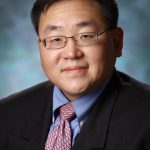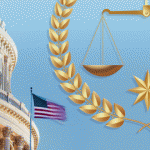 William Osler, MD, had an idea.
William Osler, MD, had an idea.
Many institutions lay claim to the legacy of Osler, and by the time he arrived at Johns Hopkins Hospital in 1889 to become the first physician in chief of the institution, he was already widely acknowledged for his clinical acumen. He now wanted to spread that clinical acumen around.1
His idea was to bring medical trainees to the bedside.
To start, he thought that medical students, during their third and fourth years of medical training, should be assigned to clinical clerkships, in which they would gain direct experience working with patients. To his mind, however, this was not enough training to create a true physician. After graduating from medical school, physicians would spend several years living on hospital grounds to immerse themselves in the care of the infirm. These residents and medical students would join Dr. Osler as he personally examined each patient in the open ward. Because inpatients at Johns Hopkins Hospital were housed in an octagonal building, the patient beds were arrayed in a single room, like the spokes of a wheel. In the process of visiting each patient, medical personnel found themselves walking in a large circle as they circumnavigated the perimeter of this octagonal building. Osler’s staff, therefore, dubbed the activity rounding.2
This style of medical education has long been standard nationwide. In William Osler’s time, however, the state of medical education was, quite frankly, a mess. First, no one could agree on what being a doctor actually meant. There were physicians like William Osler, who had trained in Europe and brought a European style of practice back to the States. Of course, this style included such practices as bloodletting, which would now be considered anathema. Because European medicine included treatments that could be worse than the diseases they purported to treat, two additional training systems had formed in the U.S.
Alternative Education
One school was founded by Samuel Thomson, a self-taught herbalist, who created a distinctly American approach to healthcare.3 Thomsonians eschewed expensive European medicines in favor of natural approaches that purged patients of poisons by restoring the body’s natural heat. The Thomsonian tradition gave rise to eclectic medicine, another distinctly American approach to healthcare that emphasized the use of herbs and physical therapy to pave the path to wellness.
Another school was founded by Samuel Hahnemann, who developed homeopathy, in which practitioners posit that small amounts of toxic substances can cure the diseases they would normally cause.4 Evidence of the influence of homeopathy is the expression hair of the dog that bit you, which is now primarily used as an excuse to add a slug of whiskey to one’s coffee the morning after a bender.
These schools flourished because of the needs of a growing nation. In Europe, physicians were the product of universities that had a reputation for training doctors and would vouch for their graduates’ skills. At the time of this nation’s founding, anyone who seemed to have the relevant skill set was welcome to refer to themselves as doctor. Most American physicians at the time could not afford to travel to Europe for medical training and, instead, were apprenticed to a more senior physician to learn the craft.5 This homegrown system of training made Americans remarkably accepting of a wide range of medical philosophies among their physicians, even as medical training became formalized.
It should also be said that politics played a role in allowing these alternative schools to flourish. Andrew Jackson’s presidency had left behind a populist, anti-elitist sentiment that found Thomsonian medicine particularly appealing.6 The Jacksonians happily rejected expensive remedies in favor of common sense cures supported by alternative facts.
The other factor, of course, was greed. At some point, it became evident that money could be made in minting medical doctors, and diploma mills masquerading as medical schools sprung up across the country, like academic kudzu.7
The Flexnerian Revolution
In 1904, the American Medical Association (AMA) set out to reform American medical education. The AMA founded the Council on Medical Education (CME), which created the overall structure for a four-year medical education, comprising two years of anatomy and physiology, followed by two years of clinical work at a teaching hospital. The CME also set the minimum requirements for entry into medical school, thus introducing pre-med into the academic lexicon.8
Not surprisingly, these pronouncements made little impact. The public, in general, showed little interest in getting involved with telling schools how to train doctors. In the absence of a groundswell of moral outrage, little motivation existed for any medical school to come to heel.
Therefore, in 1908, the CME commissioned the Carnegie Foundation for the Advancement of Teaching to survey the current state of medical education in the U.S. The Carnegie Foundation, in turn, contracted the work to Abraham Flexner. Flexner was an interesting choice; he was an experienced educator, but had no training either in medicine or medical education.9
Flexner proceeded to visit each of the 155 medical schools that existed in North America at the time, each reflecting some mix of the extant medical philosophies. At the end of his travels, Flexner documented what he saw. The eponymous Flexner Report was scathing.
He found the vast majority of medical schools in the U.S. were not up to the task of educating doctors. In his report, he proposed five major reforms, based on the model created by William Osler at Johns Hopkins:10
- Expand the prerequisites for medical training to include the basic sciences;
- Revise classroom instruction to emphasize the application of the scientific method to the life sciences;
- Provide access to medical wards, where students could learn, under supervision, from patients;
- Create a full-time medical faculty dedicated to research and teaching; and
- Strengthen state regulation of medical licensure.
If William Osler was the father of modern medicine, then Abraham Flexner was its midwife.11 The impact of the Flexner Report on American medical education cannot be overstated. In the years following its publication, over half the medical schools in North America closed. The American Osteopathic Association introduced curricular changes in osteopathic medical schools that made the doctor of medicine (MD) and doctor of osteopathic medicine (DO) degrees nearly interchangeable. The Flexner Report struck the death knell for Thomsonianism and other forms of alternative medicine in U.S. medical schools.
The Flexner Report had a dark side that needs to be acknowledged. Underlying the report was the belief that society would be better off if only the right people became physicians. Only the well-off could afford to complete the prerequisites demanded by Flexner, followed by a doubling in the length of medical school education from two to four years. Similarly, only wealthy institutions had the resources to provide the type of education Flexner insisted was necessary. The Flexnerian model of medical education effectively prevented the hoi polloi from aspiring to become physicians.
More importantly, Flexner was racist.12 He asserted that Black physicians should only be allowed to treat Black patients. The Flexner Report led to the closing of five of
the seven Black medical schools, leaving behind only Howard University College of Medicine and Meharry Medical College. Had those other schools remained open, an additional 35,000 Black physicians might have joined our ranks.13
Flexner & State Licensure
The lesser-discussed consequence of the Flexner Report was divorcing medical education from certification to practice. Prior to the Flexner Report, medical schools conferred both the medical degree and the right to practice medicine. Post-Flexner, medical schools provided only confirmation that a given student had completed an appropriate course of study to become a physician. The right to practice medicine was conferred by the state.14
From Flexner’s point of view, this made perfect sense. At the time, the majority of medical schools were private institutions that were mainly interested in earning money. They were not a neutral or reliable arbiter of medical proficiency. Given that physician qualifications were a matter of public interest, the state seemed to be the natural guardian against quacks and charlatans.15
Although some states had introduced physician licensure previously, the Flexner Report made state licensure standard. Thus, in addition to reforms in medical education, the Flexner Report fueled the widespread adoption of a disjointed system in which each state sets its own standards for granting physicians a license to practice medicine.
Medical license reciprocity is the practice of granting physicians in one state the right to practice medicine in another state. You’ve never heard of this courtesy because, by and large, it doesn’t exist—except in Michigan. The Michigan Board of Medicine will grant the right to practice to any physician who has had an active license for at least a decade anywhere in the U.S. or Canada.16 Before the pandemic, no other state routinely granted this courtesy.
The New Mexico Medical Board allows licensure by endorsement, in which board-certified physicians who have been licensed and in practice in another state for at least three years can apply for a medical license without resubmitting proof of education or training.17 Endorsement is not the same as reciprocity; it’s just a shortcut. The candidate still needs to pay the licensure fee.
Now we come to the real reason that states have clung to this antiquated system of medical licensure. When you wonder why there is no national license to practice medicine, an obvious answer is profit.
The average cost of initial medical licensure for an MD in the U.S. (including a background check, where required) is $458. In five states, the cost of initial medical licensure is over $1,000; in 28 states, it is at least $500.18 Nationwide, just granting medical licenses to physicians generates well over $200 million in total state revenue annually.
There is also a less obvious answer: competition. Controlling who can practice medicine allows the state to control competition. Physicians who live in a given state can be protected from having to compete with physicians from neighboring states. Because it is difficult for physicians to practice across state lines, a physician who earns money in a given state is more likely to spend (and pay taxes) on that money in that same state. State legislators have no particular incentive to increase competition for the physicians who voted them into office.
National Medical Licensure
Publicly, states aver that they continue to play a vital role in assuring the public that medical practitioners in their state are qualified to do so, as if physicians who see patients in Maryland might not be qualified to see patients in Delaware or Utah.
This ostensibly vital role played by state medical boards came into question during the past several years. At the height of the pandemic, when in-person visits were no longer feasible, many states loosened their licensure requirements to allow out-of-state physicians to provide remote care for patients through telemedicine. Unfortunately, these decisions were made on a state-by-state basis. And now that we have resigned ourselves to the new normal, licensure rules are being reinstated, even for telemedicine visits.
In his editorial in the American Journal of Medicine, Amr Sawalha, MD, director of the Division of Rheumatology at the University of Pittsburgh, argues:19
What is puzzling and defies logic, however, is that securing a license to practice medicine in one state does not allow for practicing the same type of medicine in another state in the same country. This contradicts the fact that accreditations and standards for medical education and training are regulated at the national level. Are patients living in this country different when they cross state lines? Does the human anatomy or physiology change when crossing the Mississippi River from Missouri to Illinois or driving across the George Washington Bridge from New York to New Jersey, for example? Does a physician really need four medical licenses from Arizona, Colorado, New Mexico and Utah to treat patients separated by the lines of the Four Corners Monument? Or is lupus (a disease I treat) different if a patient wakes up in an Eastern or a Western time zone?
The groundwork to address this issue already exists, in the form of the Interstate Medical Licensure Compact (IMLC). The Compact extends the concept of licensure by endorsement to multiple states. A board-certified physician who holds an unrestricted medical license in a compact member state (and meets a number of prosaic requirements) is eligible for expedited licensure in other compact member states. At this time, only 10 states have made no moves toward joining the Compact.20
This is not a satisfactory solution. The Compact essentially is a paperwork workaround. Participants are still issued individual state licenses and are required to pay full licensure fees for each state, in addition to the $700 charged by the IMLC to facilitate the process. The IMLC does, however, demonstrate that a nationwide medical license using a single application is feasible.
State licensure of physicians was a natural outgrowth of the haphazard history of medical education in the U.S. Antebellum America was rife with physicians possessed of dubious qualifications, and there was no easy way for a prospective patient to differentiate a truly excellent physician from a physician who was, at best, ineffectual. Those days, however, are now safely behind us. The Oslerian model of medical education has been universal for some time; patients no longer risk encountering a Thomsonian or an herbalist at the local urgent care center. It is no longer reasonable to claim that a physician practicing in one state may not be competent to practice in another.
The current system of medical licensure impedes patient care. This impediment is particularly relevant in rheumatology, given the workforce shortages that plague our specialty. A nationwide medical license, along with judicious use of telemedicine, would dramatically increase patients’ access to subspecialty care. William Osler himself practiced in Canada, Pennsylvania, Maryland and England. His peripatetic career demonstrates that a physician’s skills are not limited by government borders.
State medical licensure was created to address a problem that no longer exists. We should now follow Osler’s example and remove artificial impediments to clinical practice.

Philip Seo, MD, MHS, is an associate professor of medicine at the Johns Hopkins University School of Medicine, Baltimore.
References
- Packard FR. William Osler in Philadelphia 1884–1889. Arch Intern Med (Chic). 1949;84(1):18–25.
- Sugg DK. Show-and-tell for doctors Making the rounds: In a tradition that began at Hopkins Hospital, doctors learn from patients and each other. The Baltimore Sun. 1995 Sep 22.
- He A. Thomsonian medicine: Herbalism, home remedies, and popular distrust of professional medical training in 19th century America. Bernard Becker Medical Library. 2022 Jan 12. https://tinyurl.com/3sz9btsx.
- History—Samuel Hahnemann. Bioregulatory Medicine Institute. https://www.biologicalmedicineinstitute.com/samuel-hahnemann.
- Sigerist HE. The history of medical licensure. JAMA. 1935;104(13):1057–1060.
- Appel TA. The Thomsonian movement, the regular profession, and the state in Antebellum Connecticut: A case study of the repeal of early medical licensing laws. J Hist Med Allied Sci. 2010 Apr;65(2):153–186.
- Devine S. Health care and the American medical profession, 1830–1880. The Journal of the Civil War Era. 2017 Jul 6. https://www.journalofthecivilwarera.org/2017/07/healthcare-american-medical-profession-1830-1880.
- Looking at the history of the AMA and medical education. American College of Allergy, Asthma & Immunology. 2017 Dec 18. https://college.acaai.org/looking-at-the-history-of-the-ama-and-medical-education.
- Duffy TP. The Flexner Report—100 years later. Yale J Biol Med. 2011 Sep;84(3):269–276.
- Barzansky B. Abraham Flexner and the era of medical education reform. Academic Medicine. 2010 Sep;85(9):S19–S25.
- ‘Father of modern medicine’: The Johns Hopkins School of Medicine, 1889–1905. National Library of Medicine. https://profiles.nlm.nih.gov/spotlight/gf/feature/father-of-modern-medicine-the-johns-hopkins-school-of-medicine-1889-1905.
- Redford G. AAMC renames prestigious Abraham Flexner award in light of racist and sexist writings. Association of American Medical Colleges. 2020 Nov 17. https://www.aamc.org/news-insights/aamc-renames-prestigious-abraham-flexner-award-light-racist-and-sexist-writings.
- Campbell KM, Corral I, Infante Linares JL, et al. Projected estimates of African American medical graduates of closed historically Black medical schools. JAMA Netw Open. 2020 Aug 20;3(8):e2015220.
- Irby DM, Cooke M, O’Brien BC. Calls for reform of medical education by the Carnegie Foundation for the Advancement of Teaching: 1910 and 2010. Acad Med. 2010;85:220–227.
- Davidfsmb. The forgotten chapter of the Flexner report. The Armchair Historian. 2019 May 2. https://armchairhistorian.blog/2019/05/02/the-forgotten-chapter-of-the-flexner-report.
- Michigan Medical Board License Service. MedLicense.com. https://tinyurl.com/yckbmuer.
- Medical license by endorsement. N.M. Code R. §16.10.2.10. Register. 2022 Aug 23;33(16). https://tinyurl.com/yc363w9y.
- Physician licensure application fees and timelines by state. Medicus Healthcare Solutions. 2022 Aug 10. https://www.medicushcs.com/physician-licensure-application-fees-and-timelines-by-state.
- Sawalha AH. Medical licensure: It is time to eliminate practice borders within the United States. Am J Med. 2020 May 19;133(10):1120–1121.
- U.S. state participation in the compact. Interstate Medical Licensure Compact. https://www.imlcc.org/#.



